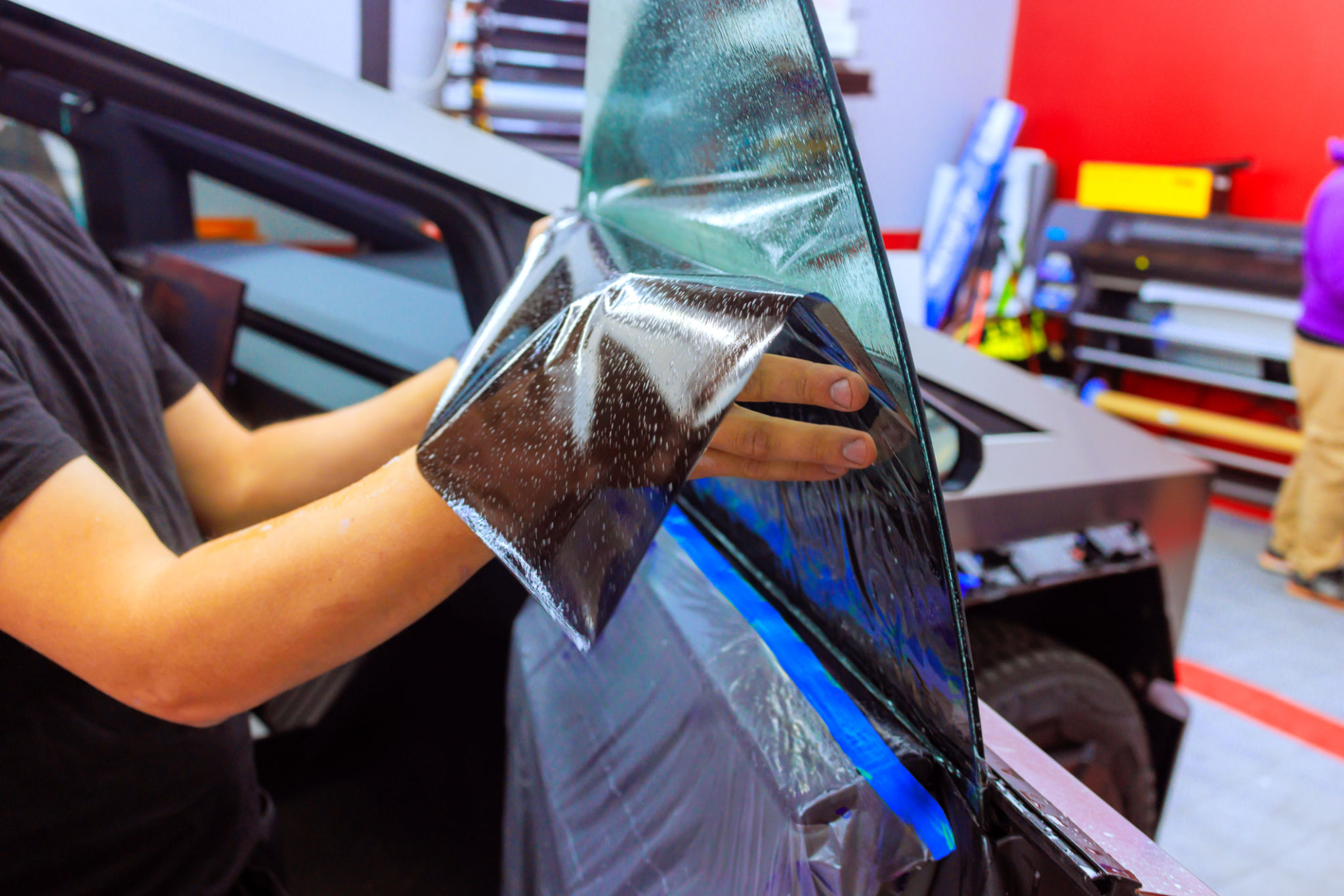Comprehensive Guide to Choosing the Right Automotive Tint for Your Vehicle
Understanding the Basics of Automotive Tint
Automotive tint is more than just a cosmetic enhancement for your vehicle; it serves multiple purposes, from reducing glare to enhancing privacy. When choosing the right tint, it is essential to understand the different types available and the benefits they offer. The most common types include dyed, metalized, hybrid, carbon, and ceramic tints, each offering unique advantages.

Dyed tint is one of the most affordable options, providing a non-reflective finish and reducing glare. However, it may not be as effective in blocking heat compared to other types. Metalized tint, on the other hand, includes tiny metal particles that reflect heat and UV rays, offering better protection but potentially interfering with electronic signals.
Considerations for Tinting Laws and Regulations
Before selecting a tint for your vehicle, it is crucial to be aware of local tinting laws and regulations. These laws vary significantly from one region to another, dictating how dark or reflective your tint can be. Non-compliance with these regulations can result in fines or even mandatory removal of the tint.

To ensure you stay within legal limits, research the specific requirements for your state or country. Consulting with a professional installer can also provide guidance on choosing a tint that meets legal standards while still achieving your desired look and performance.
Evaluating the Benefits of Different Tint Types
Each type of tint offers distinct benefits that cater to various needs. Hybrid tints combine dyed and metalized layers, providing a balance between cost and performance. They offer good heat reduction and durability without as much signal interference as fully metalized films. On the premium end, ceramic tints are known for their superior heat rejection and UV protection capabilities.
While ceramic tints tend to be more expensive, they do not fade over time and offer excellent visibility, making them a worthwhile investment for many vehicle owners. Carbon tints are another option, providing a sleek appearance with enhanced heat rejection and no signal interference.

Professional Installation vs. DIY
Once you've decided on the type of tint you want, the next consideration is whether to opt for professional installation or tackle the project yourself. Professional installation ensures a flawless finish and often comes with a warranty, providing peace of mind. Experienced installers have the tools and expertise to avoid common pitfalls like bubbling or peeling.
DIY kits are available for those who prefer a hands-on approach. While these kits can save money upfront, they require precision and patience to achieve a satisfactory result. Weighing the pros and cons of each option will help you make an informed decision that suits your budget and skill level.
Maintaining Your Automotive Tint
Proper maintenance is key to ensuring the longevity and effectiveness of your automotive tint. Avoid harsh cleaning agents or abrasive materials that can damage the film. Instead, use mild soap and a soft cloth to gently clean tinted windows. Regular maintenance not only preserves the tint but also enhances its performance over time.

In conclusion, selecting the right automotive tint involves considering various factors such as type, legal restrictions, benefits, installation methods, and maintenance. By understanding these elements, you can make an informed choice that enhances both the aesthetic and functional aspects of your vehicle.